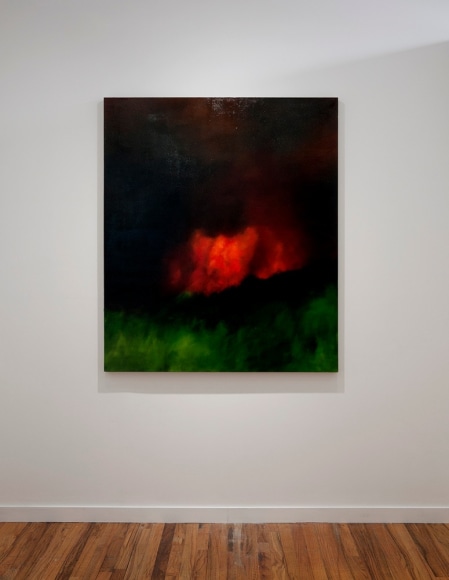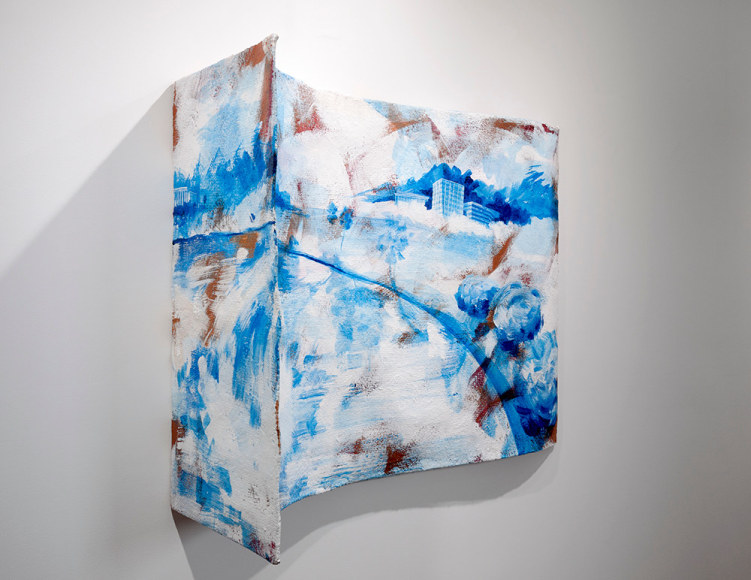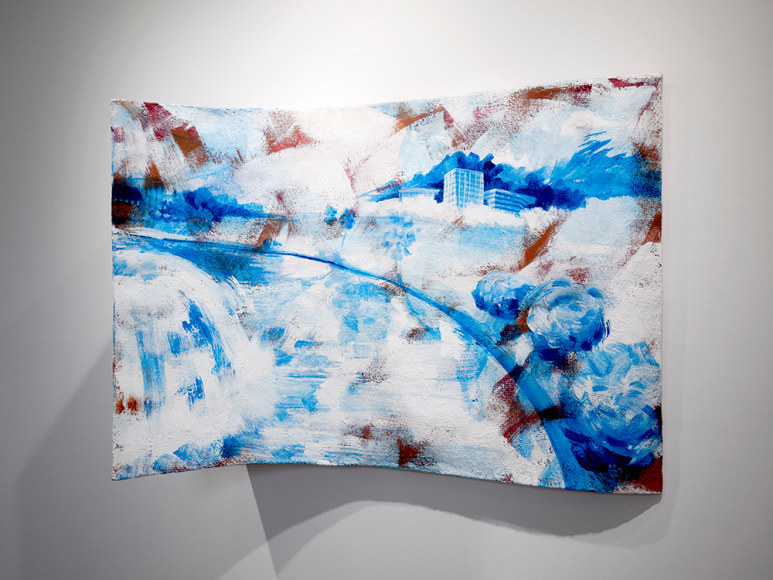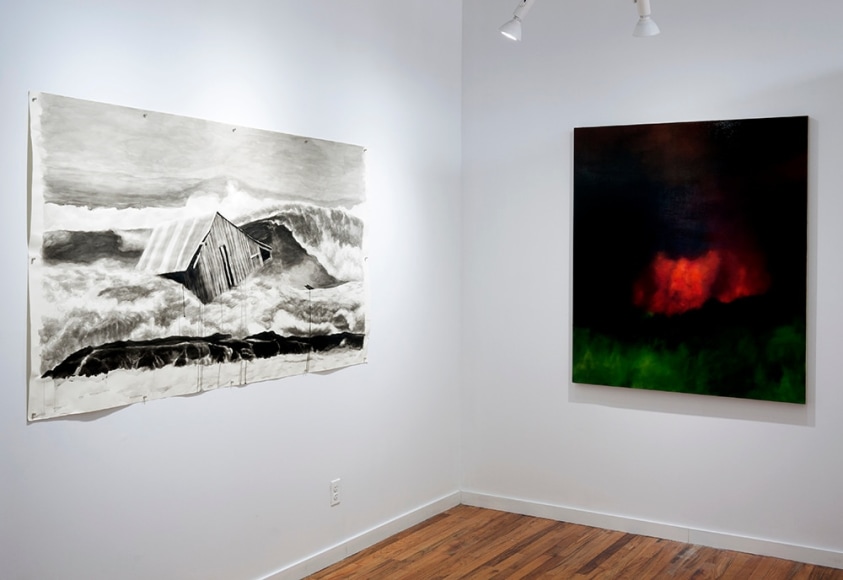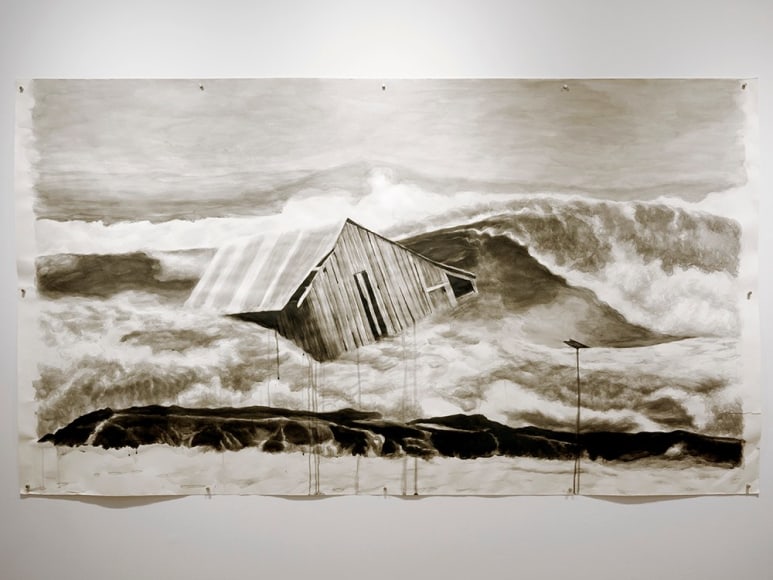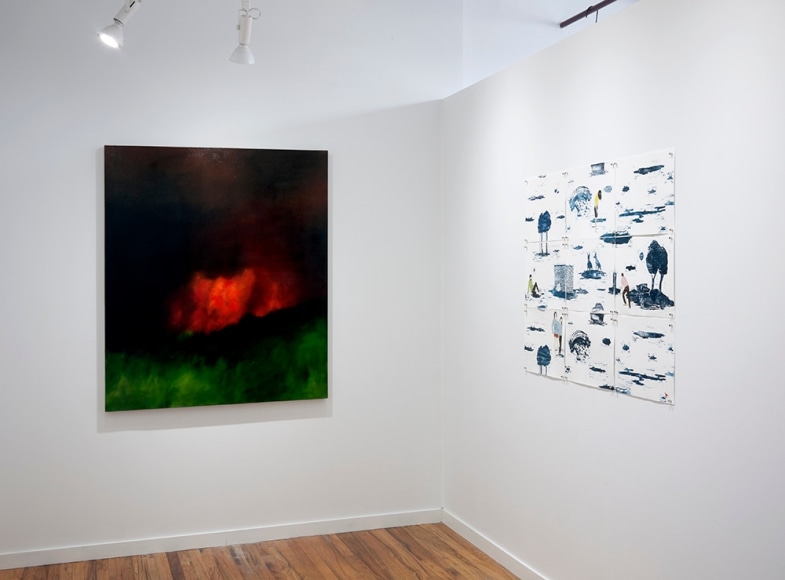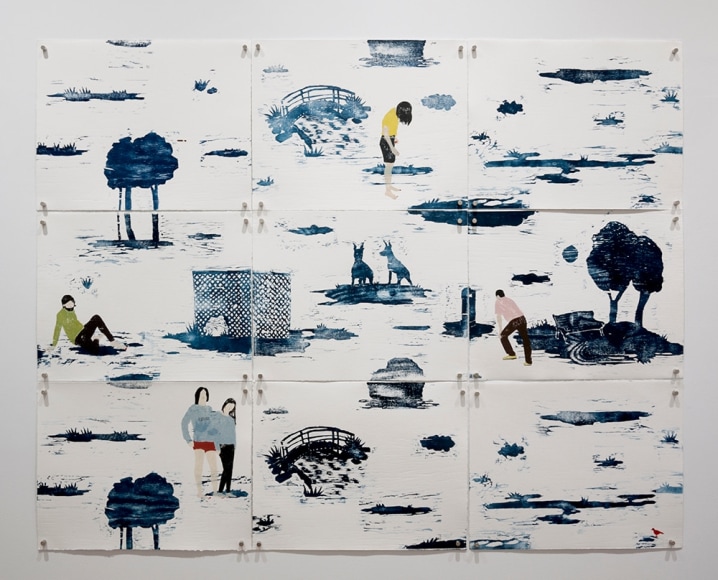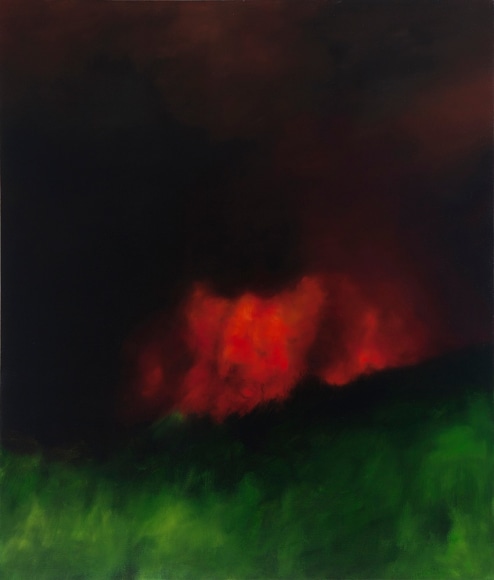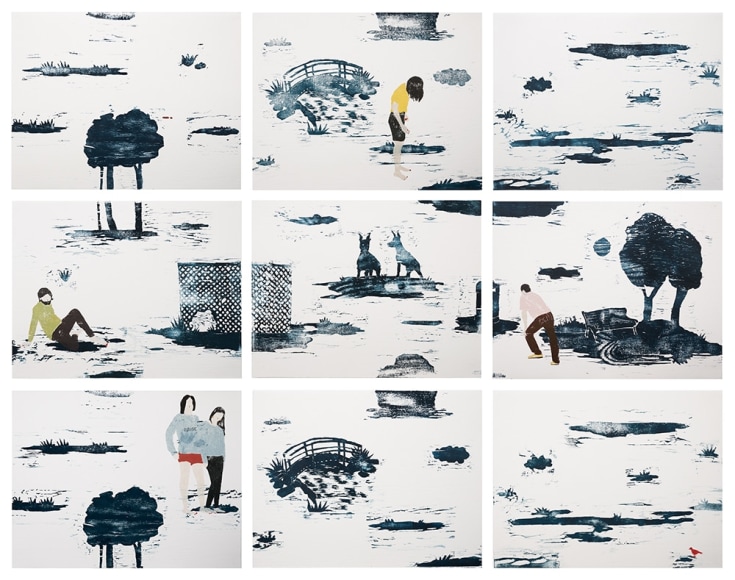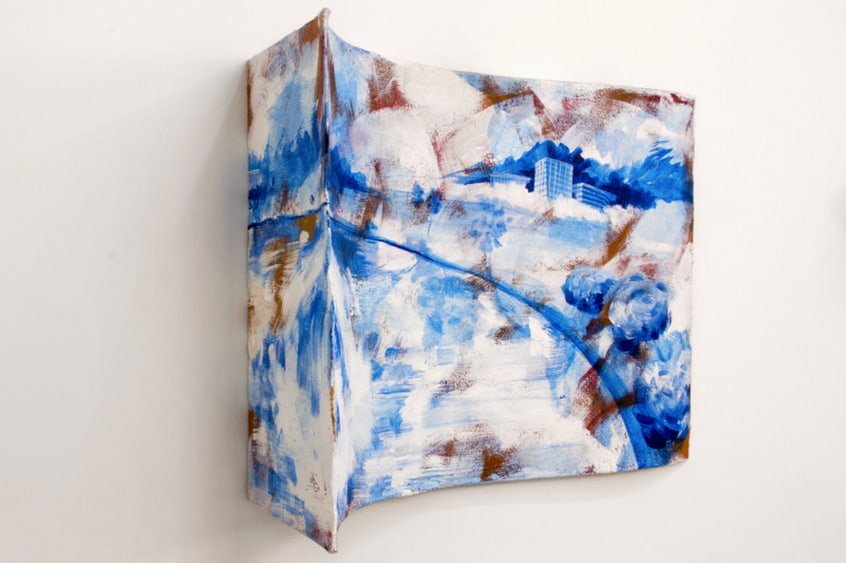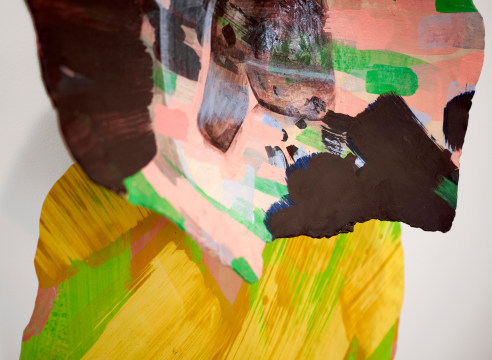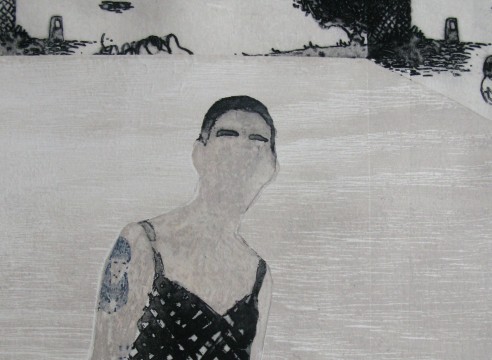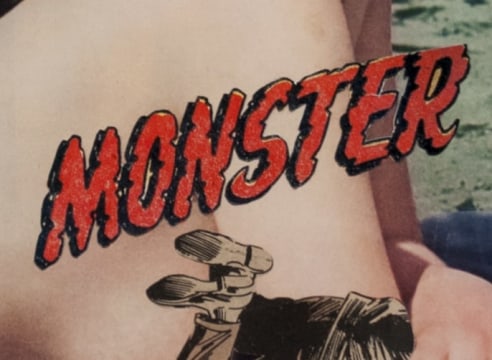
Disquieting Vicinities
Colleen Blackard, Rachael Gorchov, Karen Marston and Elin Rodseth
January 15 - February 14, 2016
This is an exhibition about slightly sinister landscapes.
Four artists are included in the exhibition, with one artwork selected from each. All four artists have unique takes on landscape, with a variety of materials and methods. While none of them deal overtly with sinister actions in their own work, the selections made here place the artists in a new context, one where darker inferences can be made.
The landscape has a long, obvious lineage in art history. With more contemporary pursuits it is possible to use the landscape as a means to an end, or as a metaphor for less-tangible thoughts. There is also a beauty inherent to the landscape genre, whether bucolic or dystopian, and while this characteristic is not of centrifugal for the selected artists, it remains a part of the work nonetheless.
Colleen Blackard combines elements of nature and earthly images with a sometimes surreal interpretations of memory, consciousness and change. These are often made solely with ballpoint pen, though she also works in ink wash. In Release (2014), a rustic barn is tossed about in chaotic ocean waves. The scene can be interpreted through a variety of perspectives: the very real dangers global warming brings to human lives, or the personal uneasiness felt from the constantly shifting changes, conflicts and locations of our modern fluid lives.
Rachael Gorchov creates hybrids somewhere between painting and sculpture. She focuses on the landscapes of suburban, semi-public spaces, such as industrial parks. By using curved 3D forms that escape from a wall combined with an almost abstract gestural style, she delicately hides the landscape view within the overall form. Lake Land (2014) presents one of these suburban California visages, cast in a cold, almost erie winter light, where much feels hidden from view.
Karen Marston is a painter who embraces the raw power of nature. Her series tend to focus on forest fires, tornadoes and hurricanes, volcanic eruptions, or lighting storms. While these forces can wreak havoc on human lives, they remain majestic and emotionally neutral in their power. They are simply part of the ongoing circulation of the Earth itself and, when seen from a distance, their pure beauty is something to behold. This sensibility is clear in Night Blaze (2012).
Elin Rodseth is more a figurative artist. She is interested in strangers, vaguely familiar people we might see but not know, and misty places that we travel through but can never call home. She works only through print techniques, but by embracing the transference process and loss of information she is able to use them almost as drawing tools. In Wayfarers (2015), an edition published by Owen James Gallery, Rodseth has taken what were previously background details in other works and created a landscape reminiscent of old delftware patterns and wallpaper designs.. Within this infinite landscape roam her collected strangers, assemble together here but remaining uncommunicative with each other, perhaps even unaware that they are not alone.

